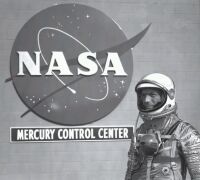|
|
| ||||||||||||||||||||||||||
Asteroids, Asteroid Missions, Asteroid SpacecraftNASA-JPL Dawn was launched on September 27, 2007, and entered orbit around the asteroid Vesta in July 2011. Dawn departed Vesta in July, 2012, and arrived at the dwarf planet Ceres in February 2015.Vesta and Ceres "are believed to have accreted early in the history of the solar system. The mission will characterize the early solar system and the processes that dominated its formation." The Dawn spacecraft is driven by three efficient ion thrusters and carries three principal instruments: a framing camera (FC), a visible and infrared mapping spectrometer (VIR) and a gamma ray and neutron detector (GRaND). NASA HQ Dawn page - Dawn at Twitter Dawn maps the surface composition of Vesta .pdf Mapping Vesta: First Results from Dawn's Survey Orbit .pdf The Ion Propulsion System for Dawn .pdf The Near Earth Asteroid Rendezvous Shoemaker spacecraft was launched on February 17, 1996, on a mission to the asteroid Eros. NEAR Shoemaker flew by Eros on December 23, 1998, entered orbit of Eros on February 14, 2000, and landed on the asteroid on February 12, 2001. Although the spacecraft was not designed as a lander, landing was possible due to the very low gravity of the asteroid. The NEAR Shoemaker program was run by Johns Hopkins University's Applied Physics Laboratory. NASA-GSFC: NEAR Shoemaker is a summary of the NEAR mission from NASA's Goddard Space Flight Center, including links to press releases, science results, and photos, including photos from flybys of Earth and the asteroid Mathilde. Space.com: NEAR Mission Archives includes news stories, feature articles, and photos and videos from the Near Earth Asteroid Rendezvous mission. NASA-JPL Asteroids, Comets, Meteorites presents a topic overview. SolarViews: Asteroid Introduction is an introductory tutorial on asteroids, including a chart listing 12 major asteroids, their size, distance from the sun, albedo, discoverer, and date of discovery. NASA-JPL Center for Near-Earth Object Studies has information on 192 potentially hazardous asteroids that pass within 7.5 million kilometers of Earth. NASA-ARC: Impact Hazards evaluates the (very slight) possibility of asteroid or comet impacts on Earth in the near future, and describes what they are doing to look out them. List of asteroids visited by (or to be visited by) spacecraft Meteors, Meteoroids, MeteoritesMeteor "showers" consist of debris from comets that crossed the Earth's orbital path. Comets and Meteor Showers, by the American Meteor Society, includes a Meteor Observing Calendar, which gives the best observing dates for numerous meteor showers.SolarViews: Meteoroids and Meteorites is an introductory tutorial on the subject, concise but thorough, with photos of stony, stony iron, and iron meteorites, Martian meteorites, and one that presumably came from the asteroid Vesta. Of about 24,000 meteorites that have been found on Earth, 34 have been identified (from their chemical composition) as having originated on Mars. The NASA-JPL Mars Meteorite Home Page describes those "Martian" meteorites, keeps track of news about them, and links to related sites. |
CometsThe European Space Agency Rosetta spacecraft was launched on March 2, 2004, and entered orbit around Comet 67P/Churyumov-Gerasimenko on August 6, 2014, sending back very high resolution photos. In November, 2014, a lander named Philae will separate from Rosetta and land on the comet.The sample return capsule from NASA's Stardust spacecraft, launched on February 7, 1999, landed at the U.S. Air Force Utah Test and Training range at 3:10am (1010 GMT) on Sunday, January 15, 2005. Stardust traveled to Comet Wild 2, collected dust from the comet, and has returned those samples to Earth for analysis. Stardust image gallery NASA's Deep Impact spacecraft, launched in December, 2004, arrived at comet Tempel 1 on July 4, 2005, and at 1:52am EDT a 370 kg (820 lb) battery-powered impactor spacecraft struck the comet while the main craft flew by. The purpose of the impact was to reveal data about the comet's internal structure. There is now a gallery of detailed close-up photos of the comet. After the Temple 1 encounter, the Deep Impact main spacecraft was directed to flyby Earth on a gravity-assist trajectory that resulted in a rendezvous with Hartley 2 (103P/Hartley) in November 2010. This mission, which also includes a study of extrasolar planets, is called EPOXI. Hubble Space Telescope Comet Photographs include Deep Impact's encounter with Temple 1, and comet Shoemaker-Levy 9's collision with Jupiter in July, 1994. The National Space Science Data Center's Shoemaker-Levy 9-Jupiter Collision page links to photos of this event from the Hubble Space Telescope, the Galileo Jupiter Orbiter, and the Ulysses & Voyager 2 spacecraft. Astronomy Search: AstroWeb is a directory of about 3000 astronomy links, at the University of Strasbourg in France. "The maintenance of the AstroWeb database of astronomical resources has been discontinued on 10 July 2010; its contents is still available but represents the status of Astroweb at that date." |
